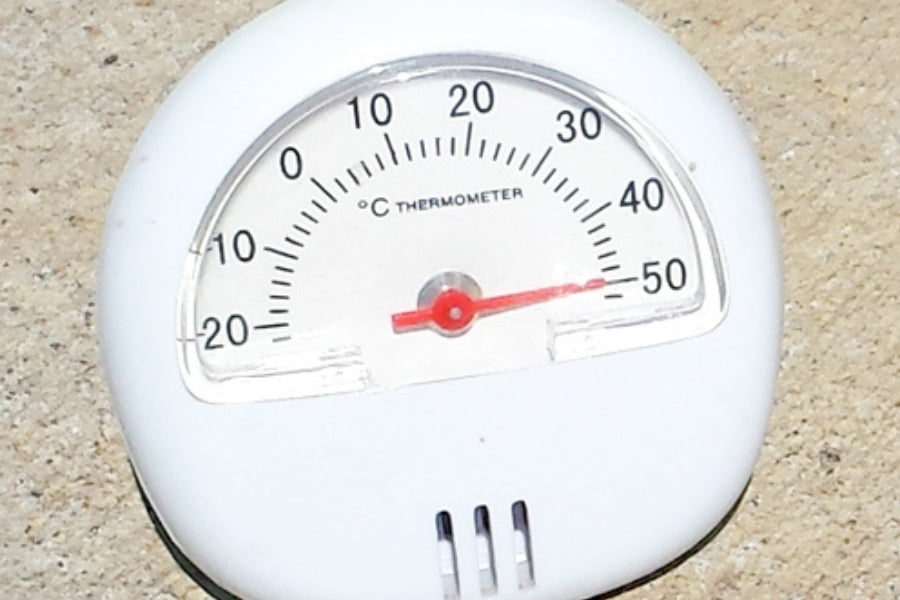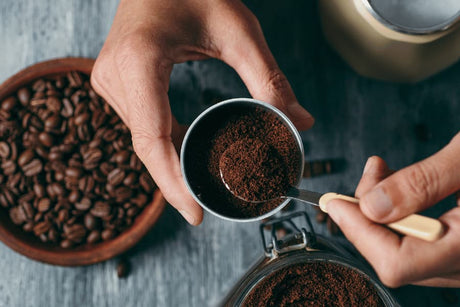mycuppa February 2014 Newsletter
How roasted coffee is affected by heat.
Last summer (2013) was particularly challenging for us dealing with excessive heat over prolonged periods in Feb and March.
When we talk about heat, it's the sustained warmer temperatures during the day and at night that cumulatively build up the overall heat in our warehouses.
We have cooling installed in our factories to reduce the impact of heat adversely affecting our products - for managing our raw materials and roasted coffee beans.
Controlling the environment temperature has long been a feature of our business and one of the key differentiators over our competitors.
That's right; it's fair to say that barely any other coffee roaster in Australia would have a temperature-controlled warehouse.
So far this summer, December 2013 was quite mild, but we have been hit some exceptionally hot conditions in January and February 2014.
In mid-Jan 2014, the temperature outside our warehouse exceeded 50 degrees C. The picture below was taken on January 17, 2014 in our driveway - pretty hot for Metropolitan Melbourne.
Why is it important to reduce the impact of high temperatures?
Coffee beans, whether they are raw or roasted, do not tolerate exposure to high ambient temperatures for extended periods (hours or days).
Raw (Green) Coffee Beans
In the case of raw coffees, they can sweat, lose moisture, create or accelerate the production of existing mold or fungus and generally lose quality.
When coffee is transported from origin to Australia, it is inside containers.
Sometimes, these containers sit on docks or warehouses for weeks at a time, and the temperature inside the container can exceed 70 degrees - think of a car parked in the sun as most coffee is grown in hot locations near the equator.
Typically, freshly processed raw coffee beans have high moisture levels, so when combined with the heat and restricted airflow inside the container, it becomes very humid.
The introduction of lined bags does not adequately address the heat exposure problem - the bag liners are primarily used to reduce exposure to airborne taint such as chemical vapours, exhaust fumes, etc. and other pollutants common in transportation and storage.
Raw coffee beans exposed to heat for long periods lose cup quality.
When roasted, they can lack body, acid, aroma and appear "flat".
Whilst raw coffee beans can indeed last three years, we ensure our stock is consumed within 3 - 4 months.
During the warmer months in Melbourne, we may hold slightly lower raw coffee bean inventories, but again, this places additional risks due to limited seasonal crop availability.
Roasted Coffee Beans
Once temperatures rise above 25 degrees C, our testing has shown that roasted coffee starts to degrade much faster than normal.
Of course, there will be someone who thinks the science behind this statement is flawed.
However, we know from what we see and taste.
Raw (green) coffee beans are roasted at high temperatures - 200 to 450 degrees
Celsius, so it only makes sense that exposure to warm temperatures will only take the roasted coffee beans into another zone we did not intend as the roasters.
We see some acceleration of the oxidization process, e.g. a speedup of degassing increased CO2 production that may manifest itself in swelling of the coffee bag (although that is normal and can occur in cooler conditions - sometimes it's the nature of the 1-way valve as some activate on different pressures).
Roasted coffee beans that may have experienced some heat exposure could also have higher levels of oil on the outside of the beans.
If the coffee is within two weeks from the Roast Date and is oily (excluding decaffe, as that goes oily very quickly), then there is a good chance the coffee has been exposed to elevated heat levels.
Our business model of holding minimal roasted stock works to our advantage during the warmer periods.
Generally, roasted coffees are barely 24 - 72 hours old in our warehouse, and our high turnover means everything sits for some time.
For our roasted coffees, we take extra care to ensure these are not exposed to high temperatures.
We roast at night, and on those few nights a year when it's 30+, we do not even try to run the roaster - despite our powerful cooling system, the concept of having coffee beans exposed for even short times means we are dealing with risks.
There are, of course, aspects we cannot control - such as when the pallets of coffee are loaded each afternoon into the AusPost collection vans.
We do our absolute best to ensure parcels are packed and stored in cooler conditions when the vans arrive for collection.
On days of high or extreme ambient temperatures, an AusPost van may be like your car in high heat when the coffee is being transported or handled.
Similarly, suppose your parcel has been sitting in one of the many AusPost warehouses or local post offices. In that case, there may be no air-conditioning outside business hours to keep the parcels below 25 deg. C.
How to store your coffee at home or work
Another article I wrote some time ago (in 2009) explains the basic principles of storing coffee.
Click on the link here to read the article Storing coffee
The #1 issue we continue to encounter is the Old Wives Tale of storing the open packs of coffee in the fridge.
Please DO NOT store coffee beans in the refrigerator.
Closely following behind the fridge issue is #2 - freezing packs of coffee beans.
There are many conflicting views on this topic.
Unfortunately, you have people who have gone through the exercise of freezing packs of coffee beans and then standing up on the soap box to tell the world, "Yes, freezing coffee beans works perfectly".
I can't entirely agree with those who think freezing works for two very simple reasons.
Moisture affects the cell structure of coffee beans during thawing.
Generally, the average coffee drinker needs a developed, calibrated or trusted palate.
For many people, it's simply a case of yep; it tastes like coffee, and as long as there is no bitterness, that's "good enough".













